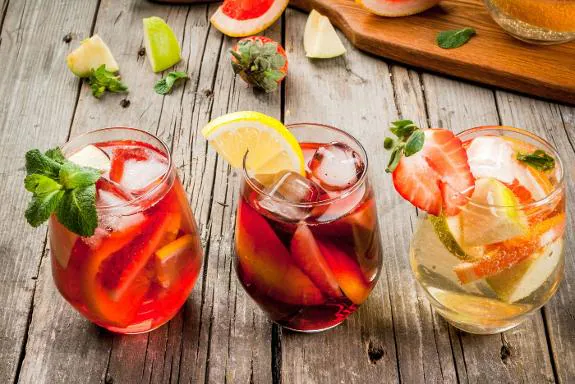The long and complex history of sangría
The name of this iconic Spanish drink actually comes from the British Antilles
ANA VEGA PÉREZ DE ARLUCEA
Viernes, 8 de junio 2018, 10:37
If you thought that sangría, paella and the siesta after lunch were a Spanish invention, then think again. The refreshing drink which combines wine and water with sugar and lemon and other complements, as it is defined in the Real Academia Española (RAE), is British. Well, the name is anyway. And before you start tearing your hair out and cursing Perfidious Albion, take a deep breath, it's not as bad as it sounds.
The British sangría has been known about since 1987 when the philologist Francisco Marcos Álvarez, divulged to the Spanish Language History Congress (Cáceres) that the word sangría comes from 'sangaree', a drink enjoyed by the British residents of the British West Indies and some other North American colonies back in the seventeenth century. When British expats are demanding sangría on the terrace of a local bar they are unwittingly using an Anglicism.
Sangaree, back in 1694 on the island of Martinique, was made with Madeira wine mixed in a jug with sugar, juice from a lemon, a little cinnamon and powdered clove, plenty of nutmeg and a crust of toast. This drink was described by the Frenchman Jean-Baptiste Labat in his book 'Nouveau voyage aux isles de l'Amérique' (1722), who tasted the concoction on his trip to the British Antilles and declared that, once strained and chilled, it was delicious and refreshing.
This 'sangaree', made with wine from Madeira, Porto or the Canary Islands (sometimes also with rum), was a very popular drink in the colonies of Barbados, Bahamas and Virginia throughout the seventeenth and eighteenth centuries. From the English 'sangaree', Labat understood 'sang-gris', a term that passed via Chinese whispers to Spanish as 'grey blood' thanks to Esteban Terreros and his 'Diccionario castellano con las voces de ciencias y artes' (1788). He defined it as a beverage that the English invented and is often drunk in the English and French colonies of America: the English say that it refreshes because it contains some lemon juice or citron [...] but that it goes quickly to the head proves that this drink contains a lot of spirit and a lot of fire.
In 1803, the RAE would veto 'grey blood' and would choose to include a new meaning for the word sangría: a drink that is composed of water, lemon and red wine. This meaning stood for decades in Mexico and other Spanish-American countries, probably due to the Caribbean influence, but strangely in Spain, there is no previous mention to 1800, except for sangrías de vino tinto served at the Cadiz Carnival in 1770.
Is it that wine and lemon maybe didn't appeal to Spaniards? Of course it did, but until the beginning of the 19th century that mixture was known here as lemonade. Descendant of the medicinal and spicy wines of the Middle Ages, wine lemonade was one of the most popular drinks of the Golden Age.
Whether served as a soft drink or as a medicine, it was used to treat fever, vomiting and as an anticoagulant measure before bloodletting.
However by the mid-nineteenth century, Spain fervently adopted the term 'sangría' and the old 'lemonade' was abandoned.
'Lemonade' is still alive in Holy Week in León and lemonade txakoli is typical of Orozko (Vizcaya). The zurra or zurracapote are also similar drinks made with white or red wine, fruit and sugar.
In Menorca, the sengri menorquin, without a doubt comes from the English 'sangaree'. The British occupation of the island during the seventeenth century left, among other things, this hot drink made from red wine, sugar, orange, cinnamon, anise, nutmeg and bread, extraordinarily similar to that concoction that over 300 years ago Labat tried in sunny Martinique.
